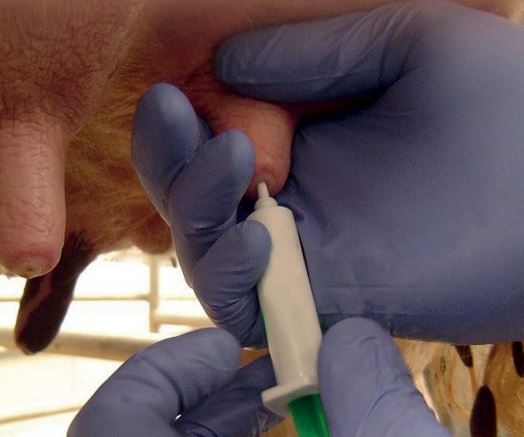- Home
- Knowledge library
- Development of a Novel Approach to Predict and Prevent Streptococcus uberis Mastitis in British Dairy Herds
Development of a Novel Approach to Predict and Prevent Streptococcus uberis Mastitis in British Dairy Herds
Summary
Bovine mastitis, one of the most important diseases of dairy cattle worldwide, is generally caused by bacterial infection of the mammary gland. Mastitis pathogens are categorised as ‘contagious’ (those in which transmission occurs between cows) or ‘environmental’ (those in which transmission occurs from environment to cow). S. uberis is reported as the most common major pathogen associated with mastitis in the UK, accounting for approximately one third of all clinical and subclinical cases respectively. Whilst S. uberis has historically been considered an environmental pathogen, recent studies using molecular methods have suggested that this is not always the case and contagious transmission can be important.
Key Findings:
- Potential transmission events (PTEs) were identified on 33 of the 52 farms suggesting contagious transmission is relatively widespread. In 17 of the 52 herds PTE associated cases were the dominant class of mastitis indicating that for around 1 in 3 herds contagious S.uberis transmission may be the greatest challenge.
- Genetic strain typings showed S.uberis present in mastitis on a farm were closely related and widespread compared to other S.uberis stains.
- In terms of the total cases of clinical mastitis; almost 40% of all S uberis mastitis cases were associated with only 5% of strains all of which caused PTE and Persistent infections. Other strains appeared at low frequency in only a single herd and were thus considered 'environmental'.
- More than 60% of PTE events occurred within 5 weeks of the previous case of S.uberis mastitis with an insidious onset rather than an 'outbreak'.
- Occurrence of a PTE strain increased the risk of a new clinical case for all cows in the herd for a three week period.
- Potentially contagious clinical case isolates could be distinguished from environmentally mastitis isolates within a herd by MALDI-TOF-MS analysis potentiallu allowing for a fast method for farmers to identify the behaviour of S uberis on their farm and implement appropriate control strategies.
- The population of S.uberis on each farm is highly specific to that farm and this was true for both contagious and environmental groups.
- There is substantial genetic similarity of S.uberis isolates within a herd
About this project
Aims and Objectives:
To develop a method to predict the mode of transmission, risk of infection and best measures to prevent Streptococcus uberis mastitis in dairy herds
Related resources


